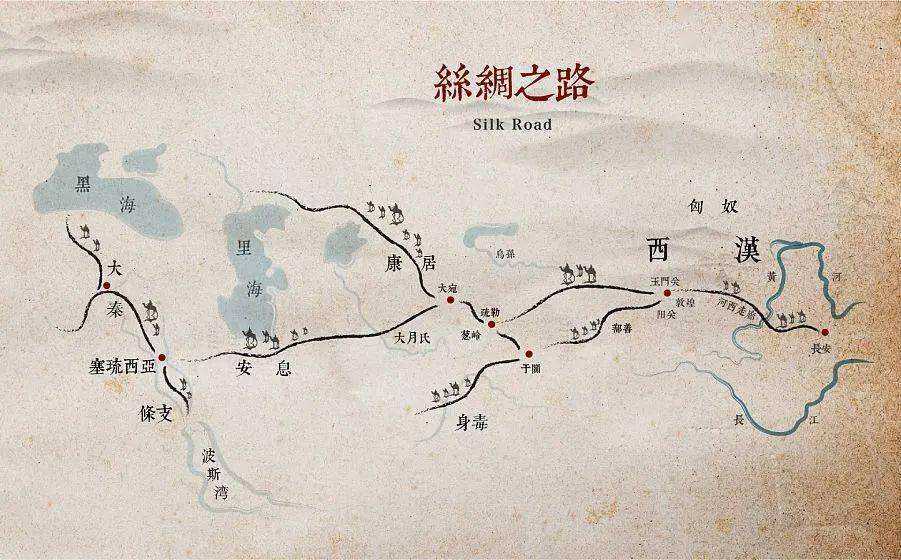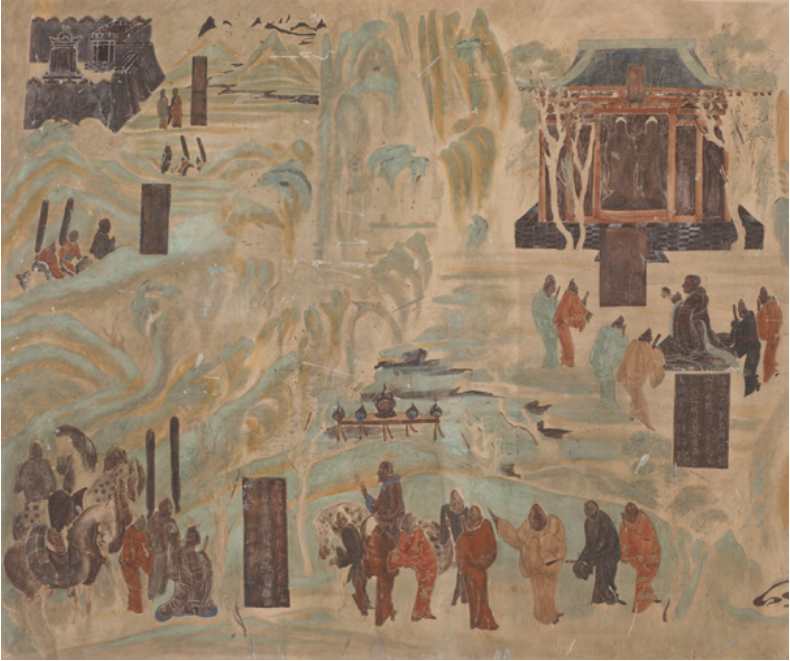
The Silk Road:From Meliodious Camel Bells to The Far Voyage
- -
Asian civilization has grown and proliferated over a long period of time, and has spread through great mountains and valleys as well as surging rivers and seas. The imprint camels and horses left on the vast expanse of land they traversed over the years and the trace of ships on the horizon of the ocean making their unending journeys, cannot be forgotten as camel bells still ring melodiously and echo in all directions. For thousands of years, China and other Asian countries have overcome geographic barriers and co-constructed the Silk Road by land and sea to connect Europe and Asia.

The ancient Silk Road Route Map
The ancient Silk Road was a commercial and trade route that connected Asia, Africa and Europe. The overland route began in Chang'an (present-day Xi'an) and Luoyang, passed through the Hexi Corridor, through Yumen Pass and Yangguan Pass, and the Tianshan Mountain range, and then made its way through Central Asia, West Asia and North Africa before finally arriving in Africa and Europe. The Silk Road also allowed different cultures to mix together, and was a passage of exchange and dialogue, which contributed greatly to the prosperity of human civilization.

Copy of Cave Painting Zhang Qian’s Travel to the Western Regions from Early Tang Dynasty in Mogao Caves, Dunhuang
During the Sui and Tang Dynasties, Chinese silk, porcelain and spices such as ginger and rhubarb on the Silk Road were sold all over the world. The gold and silver utensils, glass utensils, precious stones, animals, plants and spices brought by merchants and envoys from various countries are of great variety and splendor. The most widely circulated commodities are various textiles such as silk. The Tang Dynasty was not only a country that produced and sold textiles, but also absorbed a lot of the characteristics of textiles from other countries and carried out integration and innovation, reflecting the eclectic characteristics of the Tang culture. In addition, mutual learning in various fields such as science and technology, culture, art, religion, and political system has further promoted the exchange and communication of Eastern and Western cultures.
In the 2nd century BC, Emperor Wu of Han sent embassies to depart from Ninan (now central Vietnam), Xuwen, Hepu and other ports, and sailed to Southeast Asia, South Asia and other places, opened a trade channel to overseas, and promoted the relationship between the Han Dynasty and the Han Dynasty. wider contacts in the surrounding area.

The Maritime Silk Road Route Map
The Maritime Silk Road, an ancient artey of sea transportation, traversed across East Asia, Southeast Asia, South Asia and West Asia and ended in eastern and northern Africa, the Red Sea coastal areas and Europe. It was an essential maritime route for transportation, trade, and cultural exchange in those days. Silk, as well as porcelain and tea, were the major exports out of China, and jewelry and spices were major exports of other countries. As a result, the Maritime Silk Road is also known as the “Ceramic Road”, “Spice Road” or “Tea Road”.
